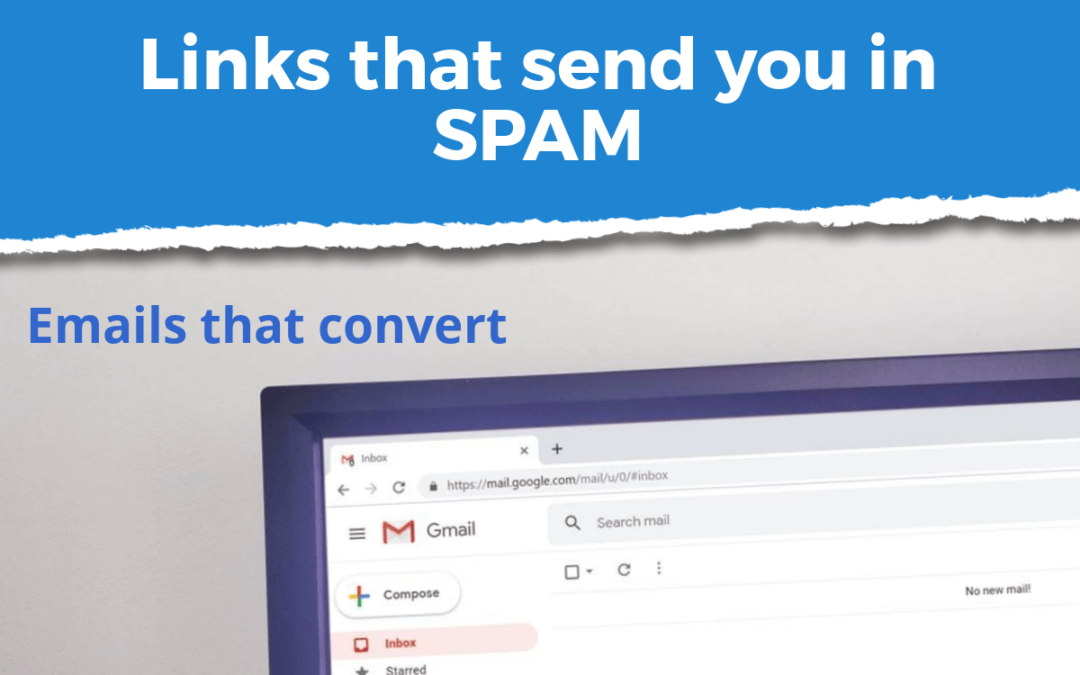Emails that convert is a blog series that is focused on delivering actionable and easy to implement tips for successful email marketing. We focus on one small concept at a time.
One of the most important factors for the success of your email marketing campaigns is your deliverability rate. That is – you want the emails to reach the inbox of your leads, not the SPAM folder or get lost without a trace. There are a lot of factors that come into place when we talk about deliverability, so we’ll split them into several posts, to save you from overwhelm.
One of the main reasons why your emails are not reaching the desired inbox is because they don’t look or read like normal personal email communication. One of the first triggers for the SPAM filters is using phishing links.
Phishing is the attempt to obtain sensitive information such as usernames, passwords, and credit card details (and, indirectly, money), often for malicious reasons, by disguising as a trustworthy entity in an electronic communication. – says Wikipedia.
The practice of Phishing includes masking a normal link and redirecting people to a different address.
If you’re suffering from low email deliverability, maybe you’re making the same mistake without even realizing it. It’s related to the way you add your links in an email. The two most common issues are Raw links and Shortened links.
1. Shortened links
It might seem counterintuitive, but links from bitly.com or similar services would sink your email and send it straight to the SPAM folder sometimes. The reason is that you’re hiding the final destination and no filter likes that.
The issue is incredibly strong related to Bitly as years ago it was used by real spammers.
How to fix it?
You don’t really need to shorten any link inside of an email – you are not restricted by the size (unlike on Twitter). Just hyperlink a fraction of the email text with the original URL and you’re good to go.
There, you fixed that nasty issue!

2. Hyperlinked Raw Links
What is a Raw link?
- click here for something is a hyperlink. The URL is hidden under the text and once you click, you’ll be taken there.
- https://buzzfixer.com/blog is a raw link. It shows the URL that it’s going to take you to.
Why is using Hyperlinked Raw links an issue?
In a personal email communication, you’ll just place the link and probably even skip hyperlinking it.
When using email marketing software, you’d hyperlink it to make it trackable. The way ALL email marketing softwares track clicks on a link is by redirecting that said link first to their domain for a second.
So what really happens is that the moment you click, you are first taken to a URL like http://buzzfixer.ontraport.com/something and then to the real URL you’ve added.
SPAM filters see this as hiding the real destination from the reader, and deception. They don’t allow for this, and your raw hyperlinks will cause lower deliverability rates.
Ideas and alternatives
I know that in some cases it’s good to have the “real” link inside of an email. But there is a very easy way to skip the issue – just place the raw link and don’t hyperlink it.
That, of course, will result in lost tracking information, but you need to take your chances sometimes.
If you’re afraid that the link won’t work – don’t! Almost all email clients will automatically make a website URL clickable once the email is delivered.
The best advice would be to not use raw links at all. Use good calls to action in your text and hyperlink them. Your readers will also like the readability of the email.
I’d love to hear your thoughts on this issue. Do you ever use raw or short links in your emails? Are you willing to try another way?

